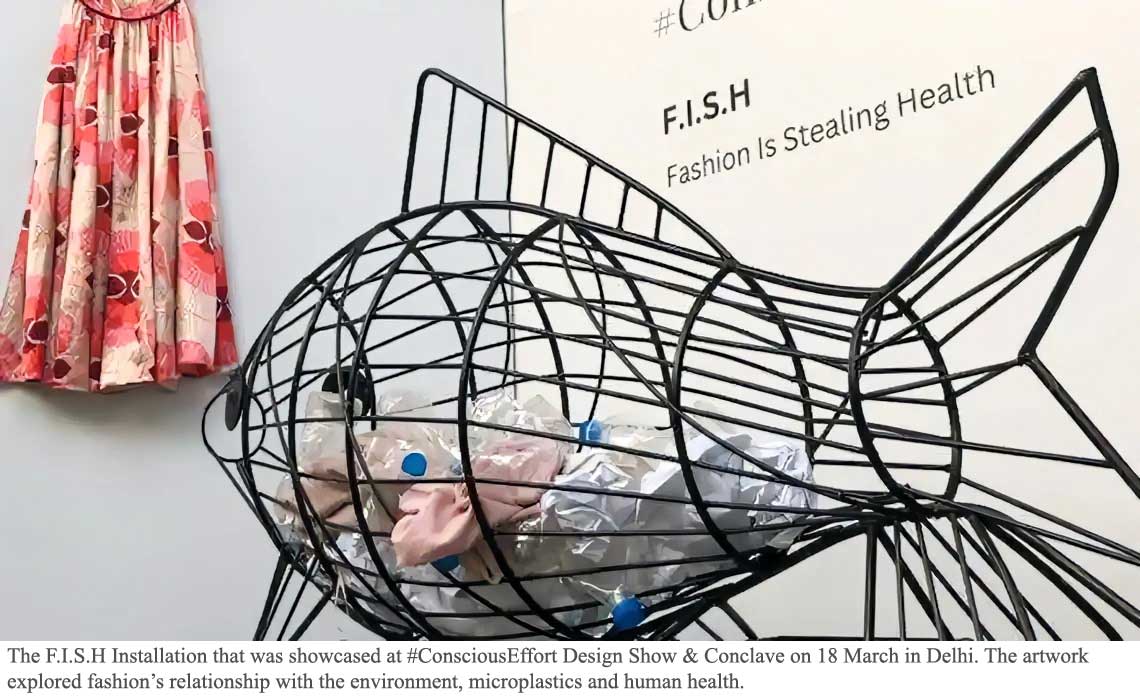
Category: GARMENTS
Country: India
Region: Asia Pacific
In an interview, Giulio Bonazzi, chair of Aquafil and inventor of regenerative nylon ECONYL, talks about what's stopping the industry from fully embracing sustainable materials and more
By Pooja Singh
23.03.2023
12:18 PM IST
Download audio and listen to this article
Earlier this week, a report came out that carried a final warning: rising greenhouse gas (GHG) emissions need to be controlled immediately, else the world is looking at a global catastrophe.
The Climate Change 2023 Synthesis Report, released by the United Nations’ climate science body, the Intergovernmental Panel on Climate Change (IPCC), stated that to limit the effect of global warming to minimum, the world has to cut emissions by nearly half by 2030. The report was the fourth and final instalment of IPCC's sixth Assessment Report (AR6), a culmination of a cycle of reports that started in 2018.
The $2.5 trillion global fashion industry, which employs over seven million people, is responsible for 10% of carbon emissions and nearly 20% of wastewater. It consumes more energy than the aviation and shipping industry combined. The executive summary of “A New Textiles Economy: Redesigning Fashion’s Future” by the Ellen McArthur Foundation and the Circular Fibres Initiative, states: “The textiles system operates in an almost completely linear way: large amounts of non-renewable resources are extracted to produce clothes that are often used for only a short time, after which the materials are mostly sent to landfill or incinerated. More than $500 billion is lost every year due to clothing underutilization and the lack of recycling.”
This is why it's imperative that all the stakeholders of the fashion industry shift their practices to reduce carbon emissions.
Global fashion players must move from “product innovation” to “design innovation” when it comes to looking for sustainable textiles, says Giulio Bonazzi, chair of Aquafil, an Italy-based nylon fibres and polymers company that produces the popular regenerative nylon ECONYL textile. Aquafil collaborates with more than 2,500 brands in the world including Gucci, Prada, Burberry, Stella McCartney and several smaller, ethical start-ups. In India, they have joined hands with brands like The Summer House, Nadi Nadi, Kosha Yoga and N&S Gaia.
Bonazzi was present virtually at the sixth edition of #ConsciousEffort Design Show & Conclave, a leadership forum and design exhibit for conscious luxury across fashion, beauty and lifestyle. It was held on 18 March in Delhi. This initiative was started by entrepreneur, author and sustainability consultant Saachi Bahl, with the aim to educate, engage and empower people about sustainability in the fashion industry.
 In an interview with Lounge, Bonazzi talks about the efforts global fashion brands are taking to become eco-friendly and what's stopping the industry from fully embracing sustainable materials. Edited excerpts:
In an interview with Lounge, Bonazzi talks about the efforts global fashion brands are taking to become eco-friendly and what's stopping the industry from fully embracing sustainable materials. Edited excerpts:
What kind of efforts the global fashion industry is making in terms of innovation to be cleaner?
The efforts are many and will continue to be so. Global fashion must move from “product innovation” to “design innovation” for remanufacturing. So, the effort must not only be addressed to the aesthetics but also to the history of the product and its composition.
For any brand, big or small, adopting more responsible materials should be a priority. We call it “eco-design”, which means investing more in the early phase of the design process, designing for longevity and circularity to ensure these items don’t end up in landfill or polluting our oceans.
What are some of the big challenges when it comes to creating sustainable materials?
I actually believe that inventing new materials isn't the answer.
We already have too many materials (and many generating waste) and in my opinion, it would be much more challenging to find sensible and strategic ways to make them recyclable. The right answer is to take advantage of existing materials and re-think the production process from start to finish, the life path of the product, its end-of-life and how to make it regenerable. Only then does the process make sense. Today, the solutions are out there, and it's a matter of starting with the end in mind.
You have been working with several Indian companies. What's the scope of interest in India when it comes to recycling and materials?
India is certainly the country that will have the most spectacular development in the coming decades. And it seems very clear to me that the the Indian government and Indian consumers have a strong interest and a great attention towards the conservation of the planet and in finding solutions.
Could you talk about the details of the yarn you've created and the process behind it?
ECONYL is regenerated nylon 100% with a different story. It comes from nylon waste such as fishing nets, fabric scraps from mills and carpets destined to landfills. It is used for apparel, carpets, and other interior design products. And it has exactly the same performance as fossil-based nylon. ECONYL is nylon in all respects. By using waste to produce the ECONYL nylon, there is a double advantage: you don’t take new resources from the planet, and you have a carbon footprint 90% lower than the petrochemical one. Moreover, it is infinitely recyclable. That’s why ECONYL is a regenerated and regenerable nylon.
We are still at the initial stages of developing innovation, sustainable materials. What kind of future are we looking at in this space?
It’s a matter of “change or die”. If textile industry does not change, it will become the most polluting industry on the planet. It is forecast that we do not like and one the world will not accept. We need everyone's effort, considering we are all involved. We all can recycle on our own. When it comes to circular solutions in the truest sense, we need to involve everyone in all the value chain including the final consumer.
Sustainable materials are still not being used as much as they should. What is holding the industry back?
Two reasons. First, greenwashing. It's a sort of communication strategy aimed at building a deceptively positive self-image in terms of environmental impact that causes a lot of confusion and mistrust.
Second, costs. The initial cost to start a sustainable production process may be higher and this especially affects fast fashion. It is not an advantageous starting position.
There is a big difference between marketing and circular economy, but unfortunately not everyone understands and accepts it.
What does circularity mean to you?
A virtuous circle that is self-fueling and grows without depleting nature.
Courtesy: https://lifestyle.livemint.com/fashion/trends/the-global-textile-industry-needs-to-change-or-it-will-die-111679486222856.html
Copyrights © 2025 GLOBAL TEXTILE SOURCE. All rights reserved.